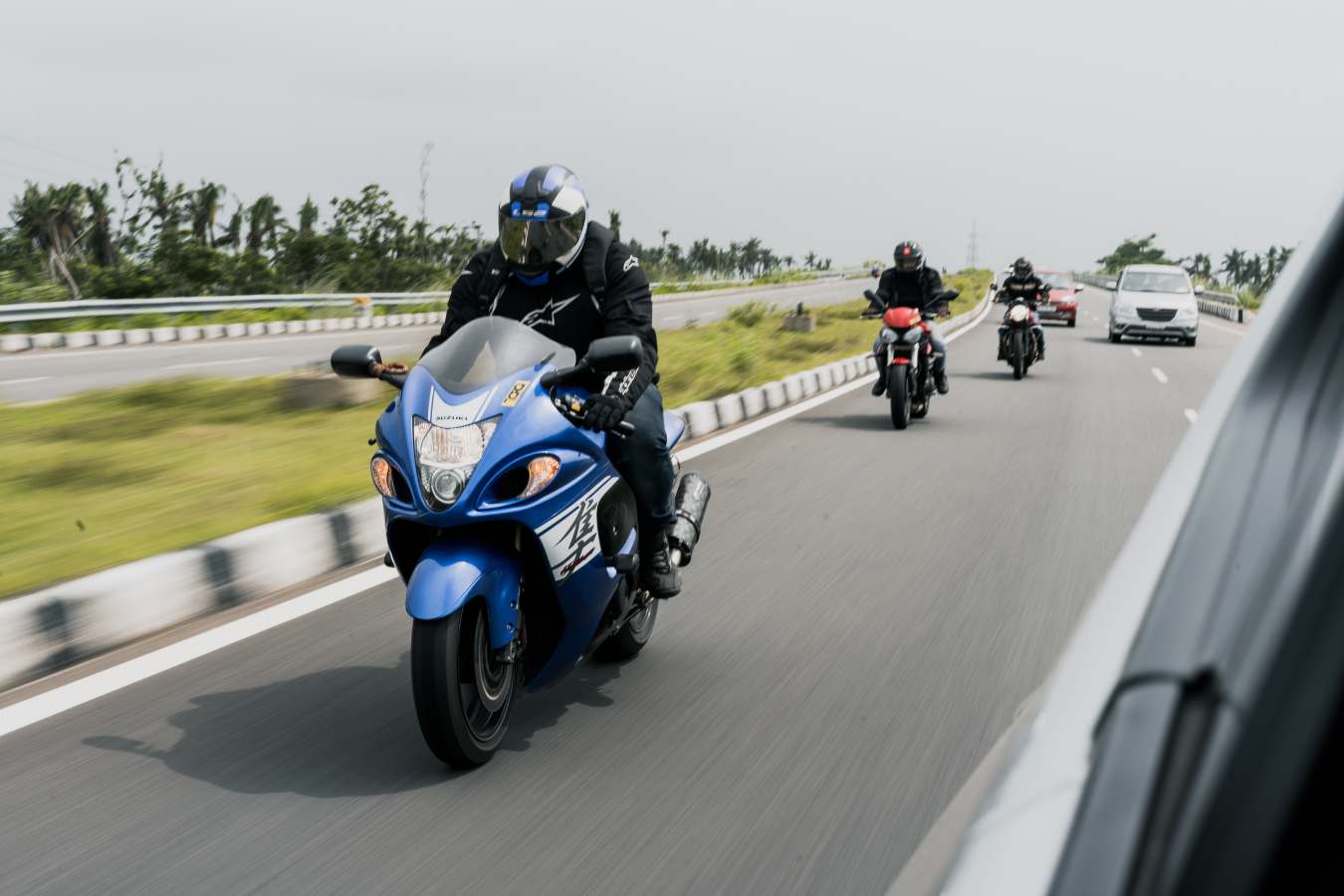Motorcycle shipping is a crucial aspect of transportation for motorcycle enthusiasts and buyers across the United States. Whether you’re relocating, purchasing a new bike, or attending a motorcycle event in a different state, understanding the ins and outs of motorcycle shipping is essential.
This comprehensive guide will provide you with valuable insights into the world of motorcycle shipping, covering everything from its importance to the industry overview.

Motorcycles hold great sentimental and financial value to their owners. When it comes to long-distance transportation, entrusting your motorcycle to a professional shipping service ensures its safety and protects it from potential damage during transit. Motorcycle shipping provides convenience and peace of mind, allowing riders to focus on other aspects of their journey.
The motorcycle shipping industry is a thriving sector dedicated to transporting motorcycles across the United States. It comprises various shipping companies that specialize in moving motorcycles safely and efficiently.
These companies utilize different modes of transportation, including open trailers, enclosed trailers, and crate shipping, catering to the diverse needs of motorcycle owners.

There are different modes of transportation available to suit your specific needs. Let’s explore these modes in detail:
1. Open Trailer Shipping
Open trailer shipping is one of the most common and cost-effective methods for transporting motorcycles. In this mode, motorcycles are loaded onto an open trailer and secured for transit. While this option provides adequate protection from road debris and weather elements, it’s important to note that motorcycles are exposed to the external environment.
2. Enclosed Trailer Shipping
For those seeking extra protection and security, enclosed trailer shipping is an ideal choice. In this mode, motorcycles are transported inside a fully enclosed trailer, shielding them from weather conditions and potential damage during transit. This method offers added peace of mind, particularly for high-value motorcycles or those with special requirements.
3. Crate Shipping
Crate shipping involves placing your motorcycle inside a specially designed-crate for transportation. The motorcycle is securely fastened within the crate, providing maximum protection against external factors. This mode is particularly suitable for delicate or vintage motorcycles that require extra care and protection.
Each of these modes has its advantages and considerations, depending on your budget, the value of your motorcycle, and your desired level of protection. Now that we have explored the different modes of motorcycle shipping, let’s move on to the factors you should consider before making a decision.

1. Open Trailer Shipping
Open trailer shipping is a popular and cost-effective method for transporting motorcycles. In this mode, motorcycles are loaded onto an open trailer and securely fastened for transit. This option is suitable for most motorcycles and offers convenience and affordability.
However, it’s important to note that motorcycles transported in open trailers are exposed to the elements and road debris. While the risk of damage is relatively low, it’s recommended to choose this mode for shorter distances or when weather conditions are favourable.
2. Enclosed Trailer Shipping
If you’re looking for enhanced protection and security, enclosed trailer shipping is an excellent choice. In this mode, motorcycles are transported inside a fully enclosed trailer, shielding them from external elements and potential damage during transit.
Enclosed trailer shipping is ideal for valuable motorcycles, vintage bikes, or those with specific requirements. The enclosed environment offers protection against adverse weather conditions, road debris, and potential theft. This mode ensures maximum safety and peace of mind throughout the shipping process.
3. Crate Shipping
Crate shipping involves placing your motorcycle inside a specially designed-crate for transportation. The motorcycle is securely fastened within the crate, providing optimum protection against external factors. This mode is particularly suitable for delicate or vintage motorcycles that require extra care and protection.
Crate shipping ensures that the motorcycle remains stationary and well-supported throughout the journey, minimizing the risk of damage. It provides a high level of security and is often preferred for long-distance or international shipments.
1. Distance of the Shipping Route
The distance of the shipping route plays a significant role in choosing the appropriate mode of motorcycle shipping. For shorter distances, open-trailer shipping may be more practical and cost-effective.
However, for longer distances or international shipments, enclosed trailer shipping or crate shipping is recommended to ensure maximum protection and minimize potential risks.
2. Timeframe for Shipping
Consider the timeframe within which you need your motorcycle to be shipped. If time is a critical factor, choosing a shipping company that offers expedited services or express delivery options becomes crucial.
Open trailer shipping often provides faster turnaround times, while enclosed trailer shipping and crate shipping may require additional time for logistics and preparation.
3. Budget Considerations
Your budget will also influence your choice of motorcycle shipping mode. Open trailer shipping generally offers the most affordable rates, making it an attractive option for those on a tighter budget.
Enclosed trailer shipping and crate shipping, on the other hand, come at a higher cost due to the added security and protection they provide. Assess your budget and consider the value of your motorcycle to make an informed decision.

Let’s delve into the essential steps involved in preparing your motorcycle for shipping.
1. Washing the Motorcycle
Before shipping your motorcycle, it’s important to give it a thorough cleaning. This not only ensures a presentable appearance upon arrival but also allows you to inspect the bike more effectively. Use a mild detergent and a soft cloth or sponge to clean the motorcycle, paying attention to hard-to-reach areas and removing any dirt or grime.
2. Documenting Pre-Existing Damage
While cleaning your motorcycle, take the time to document any pre-existing damage. Carefully inspect the bike for scratches, dents, or other imperfections, and make a detailed record of them. Taking photographs from various angles can serve as additional evidence, ensuring both you and the shipping company are aware of the motorcycle’s condition before transportation.
1. Disabling the Alarm System
If your motorcycle is equipped with an alarm system, it’s important to disable it before shipping. Notifying the shipping company about the alarm and its deactivation ensures a smooth transportation process and avoids any unnecessary complications or interruptions during transit.
2. Securing Loose Parts
To prevent any potential damage or loss during transit, secure any loose parts on your motorcycle. This includes removing detachable accessories such as saddlebags, windshields, or mirrors. Pack these items separately and ensure they are adequately protected to avoid any damage.
3. Reducing Fuel Level
Before shipping, it’s recommended to reduce the fuel level in your motorcycle’s tank. Aim to have the tank filled to no more than a quarter of its capacity. This not only reduces the weight of the bike but also minimizes the risk of fuel leakage during transportation.
4. Disconnecting the Battery
To prevent battery drain and potential electrical issues, disconnect the battery before shipping your motorcycle. This ensures that the battery doesn’t run down during transit and avoids any complications upon arrival.

Selecting a reliable and reputable shipping company is crucial. Here are the key steps to consider when choosing a motorcycle shipping company:
A. Researching Motorcycle Shipping Providers
Start by conducting thorough research on different motorcycle shipping providers. Look for companies that specialize in motorcycle transportation and have a solid track record in the industry.
Explore their websites, check online directories, and seek recommendations from fellow riders or motorcycle communities. Make a list of potential companies that align with your requirements.
B. Evaluating Shipping Company Credentials
Once you have a list of potential shipping companies, it’s essential to evaluate their credentials. Consider factors such as their licensing, insurance coverage, and years of experience in the industry.
Verify their compliance with local and federal regulations to ensure they meet the necessary legal requirements for operating as a motorcycle shipping provider. This step helps guarantee that your motorcycle is in capable hands throughout the shipping process.
C. Comparing Shipping Quotes and Services
Obtain quotes from the shortlisted shipping companies and compare them based on various factors. While cost is an important consideration, it shouldn’t be the sole determining factor.
Take into account the range of services offered, including pick-up and delivery options, transit times, and any additional features or benefits they provide. Consider the level of customer support and communication they offer, as a reliable and responsive company can greatly ease the shipping process.
D. Reading Customer Reviews and Testimonials
To gain further insights into the reputation and reliability of the shipping companies on your list, read customer reviews and testimonials. Look for feedback from previous customers who have used their services.
Pay attention to aspects such as punctuality, professionalism, and the overall condition of motorcycles upon delivery. Positive reviews and recommendations from satisfied customers are indicators of a trustworthy and dependable shipping provider.
Diligently researching, evaluating credentials, comparing quotes and services, and reading customer reviews, you can make an informed decision when choosing a motorcycle shipping company. Remember, entrusting your valuable motorcycle to a reputable and experienced provider ensures a smooth and secure shipping experience.

Once you’ve chosen a reliable motorcycle shipping company, it’s time to book their services and finalize the logistics for transporting your prized possession. Let’s explore the necessary steps to book your motorcycle shipping service smoothly.
A. Gathering Required Documentation
Before booking the shipping service, gather all the required documentation. This may include your driver’s license, motorcycle registration, insurance papers, and any specific forms provided by the shipping company (almost no documentation is needed when transporting a motorcycle within the US). Ensuring you have all the necessary paperwork ready in advance will streamline the booking process and avoid any delays.
B. Booking the Shipping Date and Time
Contact the motorcycle shipping company to schedule the date and time for pick-up. Discuss your preferred window for shipping and provide any relevant details such as the location and accessibility of the motorcycle. The shipping company will work with you to find a suitable slot that aligns with your schedule and availability.
During this stage, you may be required to pay a deposit or provide billing information to secure your booking. Make sure to clarify the payment terms and understand any cancellation policies that the company may have.
C. Reviewing Terms and Conditions
Before finalizing the booking, take the time to carefully review the terms and conditions provided by the shipping company. Pay close attention to factors such as liability coverage, insurance options, and any restrictions or requirements they may have regarding the condition of the motorcycle before shipping.
Ensure that you understand the responsibilities of both parties involved, including the shipping company’s obligations and your own. If you have any questions or concerns, don’t hesitate to seek clarification from the shipping company’s representative. It’s crucial to have a clear understanding of the terms and conditions to ensure a smooth and hassle-free shipping experience.
Following these steps, gathering the required documentation, booking the shipping date and time, and reviewing the terms and conditions, you’ll be well-prepared to proceed with the motorcycle shipping service. Completing these tasks ensures a seamless transition from the booking process to the actual transportation of your motorcycle, providing you with peace of mind throughout the journey.

A. Preparing for Motorcycle Pickup
Before the scheduled pickup of your motorcycle, make sure you have everything in order. Clear any obstacles or debris in the area where the motorcycle will be loaded onto the transport vehicle. Ensure that there is enough space for the shipping truck or trailer to manoeuvre safely.
Gather all the necessary documents, such as the shipping agreement, receipts, and any additional paperwork required by the shipping company. Double-check that you have a copy of the pick-up schedule and contact information of the shipping company’s representative who will oversee the process.
B. Motorcycle Inspection at Pickup
When the shipping company arrives to pick up your motorcycle, it’s time for a thorough inspection. Take your time to carefully examine the condition of your motorcycle before it is loaded onto the transport vehicle.
Look for any existing damage or scratches and document them with photographs or written notes. This documentation will serve as evidence in case of any disputes regarding the condition of your motorcycle upon delivery.
C. Motorcycle Delivery and Inspection
When the time comes for the delivery of your motorcycle, be prepared to receive it. Ensure that you or a designated representative is present at the designated location to receive the motorcycle. Communicate with the shipping company to confirm the delivery date and time, making any necessary arrangements to accommodate the arrival.
Upon delivery, conduct another inspection of your motorcycle. Carefully examine it for any damages or issues that may have occurred during transportation. Compare the condition of the motorcycle to the documentation you made during the pickup inspection. If you notice any new damages or concerns, make note of them immediately.
D. Reporting Damages or Issues
If you discover any damages or issues with your motorcycle upon delivery, promptly report them to the shipping company. Follow their specified procedure for reporting and filing a claim for any damages that occurred during the transportation process. Provide them with the necessary documentation, including photographs and written descriptions of the damages.
It’s important to address any concerns or damages promptly to ensure a smooth resolution with the shipping company. They will guide you through the claims process and work towards a satisfactory resolution.

A. Understanding Insurance Options
When shipping your motorcycle, it’s important to have a clear understanding of the insurance options available to protect your valuable asset. Different shipping companies may offer varying insurance coverage plans, so it’s essential to explore and comprehend the options before making a decision.
Take the time to review the insurance policies offered by the shipping companies you are considering. Familiarize yourself with the coverage limits, deductibles, and any exclusions or limitations that may apply.
Understand the terms and conditions associated with the insurance coverage to ensure you select the plan that aligns with your needs and provides adequate protection for your motorcycle.
B. Verifying Insurance Coverage
Before finalizing your choice of a shipping company, verify the insurance coverage they offer. Request detailed information about the extent of their liability coverage and how it applies to your specific motorcycle shipment. Ensure that the insurance coverage is sufficient to safeguard your motorcycle against potential damages or losses during transit.
In addition to the shipping company’s insurance, consider checking if your existing motorcycle insurance policy provides any coverage during transportation. Contact your insurance provider to inquire about any applicable coverage and understand the specific terms and conditions associated with it.
C. Handling Claims for Damaged Motorcycles
In the unfortunate event that your motorcycle sustains damages during shipping, it’s important to know how to handle the claims process effectively. Familiarize yourself with the procedures and requirements set forth by the shipping company regarding filing claims for damaged motorcycles.
When filing a claim, gather all relevant documentation, including photographs, inspection reports, and any other evidence of the motorcycle’s condition before and after shipping. Provide a detailed account of the damages incurred and any supporting information that can substantiate your claim.
Submit your claim to the shipping company according to their specified procedure and timeline. Maintain open communication with their claims department, addressing any inquiries or requests for additional information promptly. Cooperate with the shipping company to ensure a smooth and timely resolution to your claim.

A. Overview of the International Shipping Process
International motorcycle shipping involves the following stages:
Pickup: The shipping company collects the motorcycle from the designated location.
Transportation: The motorcycle is transported to the port of departure for international shipment.
Preparation: At the port, the motorcycle is prepared for shipping and loaded onto a vessel or aircraft.
Customs Clearance: Upon arrival in the destination country, the motorcycle goes through customs clearance.
Import Regulations: Compliance with import regulations and submission of required documentation is necessary.
Delivery: After customs clearance, the motorcycle is delivered to the final destination within the country.
Each stage is crucial for a smooth and successful international motorcycle shipment.
B. Required Documentation for International Shipping
International motorcycle shipping necessitates specific documentation to comply with customs and import regulations. It’s crucial to gather and prepare all the necessary paperwork to avoid delays or complications during the shipping process.
Commonly required documents for international motorcycle shipping include the original vehicle title or certificate of ownership, a bill of sale, a copy of your passport, and any other relevant ownership or identification documents. Additionally, you may need to provide a shipping agreement, insurance documentation, and a packing list that details the contents of any accompanying crates or containers.
Ensure that all documents are complete, accurate, and up to date. It’s advisable to make copies of all documents for your records and to provide duplicates as required by the shipping company or customs authorities.
C. Customs and Import Regulations
Navigating customs and import regulations is a critical aspect of international motorcycle shipping. Each country has its own set of rules and requirements, and it’s essential to comply with them to facilitate a smooth customs clearance process.
Research and familiarize yourself with the customs and import regulations of the destination country. Determine if there are any restrictions or specific requirements for importing motorcycles, such as emission standards, safety certifications, or modifications that need to be made to the motorcycle before shipping.
Consult with the shipping company and consider enlisting the services of a customs broker who can assist with the necessary paperwork and provide guidance on customs procedures. Adhering to the regulations will help ensure a seamless customs clearance process and prevent any unnecessary delays or penalties.
D. Choosing an International Shipping Method
When shipping a motorcycle internationally, you’ll need to choose an appropriate shipping method that suits your needs and budget. The two common methods are ocean freight and air freight.
Ocean freight involves shipping the motorcycle in a container aboard a cargo vessel. This method is typically more cost-effective but may have longer transit times. Air freight, on the other hand, offers faster transit times but is generally more expensive.
Consider factors such as the urgency of delivery, budget constraints, and the destination country’s accessibility when choosing between the two methods. Consult with the shipping company to determine the most suitable option for your international motorcycle shipment.
A. Temporary Storage Solutions
When you need to store your motorcycle for a short period, there are several temporary storage solutions available to ensure its safety and preservation. Consider the following options:
1. Garage or Carport: If you have access to a secure garage or carport, it can protect you from the elements and minimize exposure to dust and debris.
2. Motorcycle Covers: Investing in a high-quality motorcycle cover can provide additional protection against dust, sunlight, and moisture. Ensure the cover is specifically designed for motorcycles and fits snugly to prevent any potential damage.
3. Storage Units: Renting a storage unit is another viable option for temporary motorcycle storage. Look for a storage facility that offers climate-controlled units to prevent extreme temperature fluctuations and humidity.
B. Long-Term Storage Considerations
When you require extended motorcycle storage, it’s crucial to consider additional factors to maintain its condition throughout the extended period. Here are some considerations for long-term storage:
1. Proper Location: Choose a storage location that is secure, dry, and well-ventilated. Avoid areas prone to excessive humidity or temperature fluctuations, as they can lead to corrosion and damage.
2. Fuel and Fluids: Before storing your motorcycle for an extended period, ensure the fuel tank is full to prevent moisture buildup. Additionally, consider adding a fuel stabilizer to the tank to prevent fuel deterioration. It’s also essential to change the oil and filter to avoid potential contamination.
3. Battery Maintenance: If storing the motorcycle for an extended period, disconnect the battery or use a battery tender to maintain its charge. This prevents the battery from draining and potential damage due to long periods of inactivity.
4. Tire Care: Inflate the tires to the recommended pressure and consider using tire stands or ramps to alleviate stress on the tires during storage. Regularly inspect the tires for any signs of wear or damage.
C. Motorcycle Maintenance during Storage
Proper motorcycle maintenance during storage is crucial to ensure its optimal condition when you retrieve it. Follow these maintenance practices:
1. Cleaning: Thoroughly clean the motorcycle before storing it to remove any dirt, grime, or insects that could cause damage over time. Pay attention to areas prone to rust, such as the exhaust system.
2. Lubrication: Apply lubricant to critical components such as the chain, cables, and pivot points to prevent rust and keep them properly functioning during storage.
3. Periodic Inspection: Regularly inspect the motorcycle during storage to identify any potential issues such as leaks, pest infestation, or signs of corrosion. Address these issues promptly to prevent further damage.
4. Routine Start-ups: If feasible, start the motorcycle periodically during storage and allow it to idle for a short period. This helps circulate fluids and prevents certain components from seizing.

We have explored various aspects of motorcycle shipping in the United States. We started by understanding the importance of motorcycle shipping and provided an overview of the motorcycle shipping industry.
We then delved into different modes of motorcycle shipping, factors to consider before shipping, preparing the motorcycle for shipment, choosing a shipping company, booking the shipping service, the pickup and delivery process, insurance and liability coverage, international motorcycle shipping, and motorcycle storage options.
Each section provided valuable insights into the topic, equipping you with the knowledge needed to make informed decisions regarding motorcycle shipping.
Shipping with ease at shipacarinc.com: When it comes to motorcycle shipping, one trusted option is Ship A Car. With their expertise in the industry, they offer seamless and reliable motorcycle shipping services that prioritize the safety and security of your valuable asset.
Their dedicated team of professionals understands the intricacies involved in transporting motorcycles and ensures a smooth shipping experience from start to finish. By choosing Ship A Car, Inc., you can have peace of mind knowing that your motorcycle is in capable hands.
Advantages of Professional Motorcycle Shipping: Opting for professional motorcycle shipping services brings several advantages. Here are some key benefits:
1. Expertise: Professional shipping companies have extensive knowledge and experience in handling motorcycles, ensuring that they are properly secured and protected throughout the shipping process.
2. Convenience: Hiring professionals to handle the logistics of motorcycle shipping saves you time and effort. They take care of the necessary paperwork, coordination with carriers, and transportation arrangements, allowing you to focus on other important matters.
3. Safety: Professional motorcycle shippers use specialized equipment and secure packaging methods to safeguard your motorcycle from potential damage during transit. They also provide insurance coverage, offering additional protection against any unforeseen circumstances.
4. Efficiency: With their industry expertise and established networks, professional shipping companies can navigate the shipping process efficiently, ensuring timely pickup, transportation, and delivery of your motorcycle.
5. Peace of Mind: Entrusting your motorcycle to professionals gives you peace of mind knowing that it will be handled with care and delivered safely to its destination. You can track the progress of your shipment and rely on their dedicated customer support for any inquiries or concerns.
Finally, motorcycle shipping in the United States involves various considerations and steps. By understanding the different aspects, choosing a reputable shipping company, and following proper procedures, you can ensure a smooth and successful motorcycle shipping experience.
Whether you are moving to a new location, buying or selling a motorcycle, or participating in a motorcycle event, professional motorcycle shipping offers convenience, safety, and peace of mind throughout the process.
So, embrace the benefits of motorcycle shipping and embark on your two-wheeled adventure with confidence.
Q: What are the key things to know about motorcycle shipping in the United States?
A: Discover the essential aspects of motorcycle shipping, including modes, factors to consider, and professional services.
Q: How can I find reliable motorcycle shipping companies in the United States?
A: Research and compare motorcycle shipping providers based on their credentials, customer reviews, and service quotes.
Q: What factors should I consider before shipping my motorcycle?
A: Take into account the distance of the shipping route, timeframe, and budget considerations for a smooth shipping experience.
Q: Is insurance coverage available for motorcycle shipping?
A: Yes, professional motorcycle shipping companies typically offer insurance options to protect your motorcycle during transit.
Q: Are there specific regulations for international motorcycle shipping?
A: Yes, international motorcycle shipping involves customs and import regulations that need to be complied with for a successful shipment.
Q: How should I prepare my motorcycle for shipping?
A: Clean and inspect your motorcycle, disable the alarm system, secure loose parts, reduce fuel level, and disconnect the battery.
Q: Can I track the progress of my motorcycle shipment?
A: Yes, many shipping companies provide tracking services to keep you informed about the location and status of your motorcycle.
Q: What are the benefits of professional motorcycle shipping services?
A: Professional services offer expertise, convenience, safety, efficiency, and peace of mind for a smooth and secure shipping experience.




